#Nordre Toldbod
Explore tagged Tumblr posts
Text

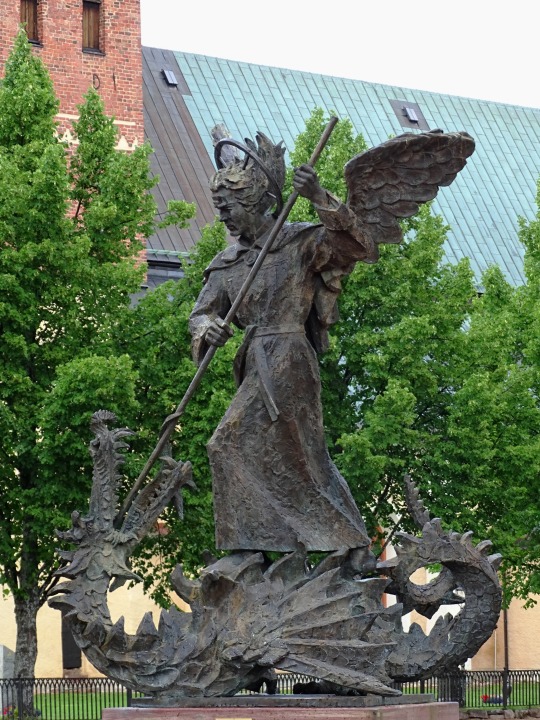



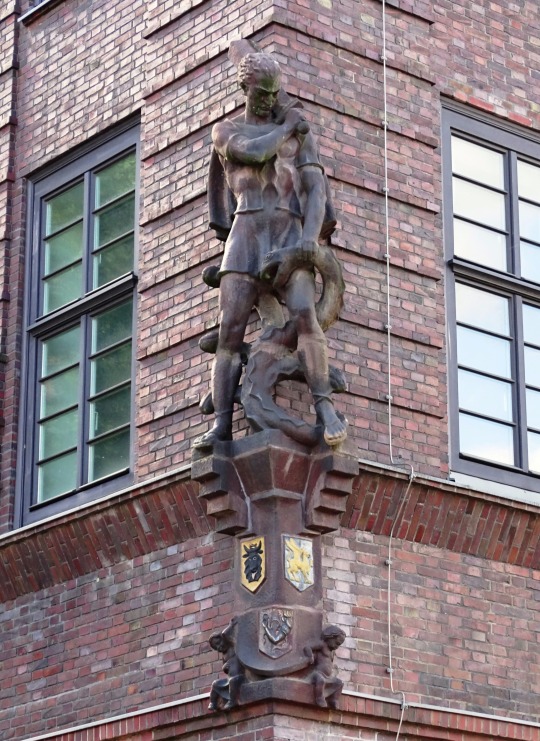






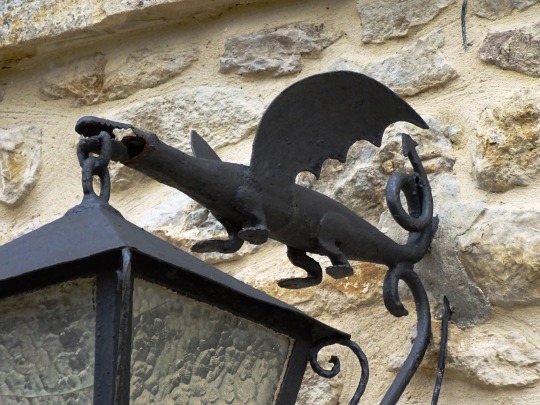













Appreciate A Dragon Day
Dragons, the magical scaly creature born from fire, have existed throughout mythology since the times of the Romans and Egyptians. Dragons, with their celestial ways and otherworldly presence, make our lives a lot more interesting, and never cease to amaze people.
Appreciate a Dragon Day is a day dedicated to learning about dragons and sharing your love for these creatures!
History of Appreciate a Dragon Day
Appreciate a Dragon Day began when Donita K. Paul wanted to celebrate the publishing of her first fantasy novel “Dragonspell”, part of the five-volume series, The DragonKeeper Chronicles.
Dragons have always been popular, existing in the mythology of cultures from all over the world. Dragons inspire us and fill us with fear at the same time. Western dragons have always been depicted as fearsome creatures to either overcome or have a kinship with, while eastern dragons were typically equated with the royalty and heavenly forces, depending on the culture.
Nevertheless, dragons also tend to represent the conquering of the spiritual soul, as they are related to many of the human emotions that block the way to enlightenment. Dragons in modern culture have always been a place of fascination for them, as many authors and filmmakers have helped transform the image of a dragon to something people can admire.
Some of the most famous stories to depict dragons are seen in Tolkien, Ursula, and J.K. Rowling’s novels. In films, movies and TV shows such as How to Raise a Dragon, Game of Thrones, and Eragon have helped shape the way people see dragons and ultimately fall in love with them. Dragons have existed since the earliest parts of history and have appeared in many different forms with many different alignments of good and evil.
The depictions of dragons tend to differ by culture. In ancient times, most societies had an ambivalent view of dragons. Like any other creature, these giant flying serpents had both a good side and a bad one.
In the West, however, attitudes towards dragons changed with the advent of Christianity in the late Roman era. Suddenly, dragons became associated with evil because of their serpentine nature and needed vanquishing. Some people believed that dragons were a real phenomenon and created stories about how great warriors had to go out into the wilderness to defeat them. The tale of St. George and the dragon is likely a direct descendent of this thinking.
When you think about it in more detail, you can understand why people thought dragons were real. Remember, in ancient times, there was no explanation for giant bones. Nobody had a clue what dinosaurs were, or that fossilized bones were millions of years old. For all they knew, these creatures perished recently and could live beyond the horizon. Believing in “dragons” was logical and perhaps necessary to protect yourself.
The old ideas weren’t far off eighteenth- and nineteenth-century discoveries in paleontology. Once the dinosaur age took off, it became clear that there really were giant serpent-like creatures who roamed the Earth millions of years ago, firing the public imagination.
The diversity of dragons is considerable, and one of the main motivations for Appreciate A Dragon Day. The fire-breathing variety is the most famous, but there are others too. Some are like gargoyles found in medieval churches. Others are many-headed hydras that pop out of the ocean. Some even depict them as wyverns, basilisks, and other mythical creatures with loose connections to the real world.
Folklore experts like Carol Rose point out that dragons are essentially “composite creatures.” We tend to think of them as highly-stylized, as depicted in films like The Hobbit. But Rose notes that they can have really unusual features, including elephant trunks.
Ultimately, the idea of dragons interacting with humans fills our mind with awe and inspires us to delight our minds with fancy. Appreciate a Dragon Day asks people to share what their favorite dragon is in popular culture and tell people why they love dragons.
How to Celebrate Appreciate a Dragon Day
When it comes to celebrating Appreciate a Dragon Day, you have a lot of options.
Draw, sketch, or color in pictures of dragons. Watch your favorite dragon-themed movie with friends. Read fantasy novels about dragons, including The DragonKeeper Series. Buy or sew a stuffed dragon for you or a friend you know – it’s all totally kosher!
If you love art, you can print out a dragon coloring page. Or you can attempt to paint a picture of one of these mythical beasts from scratch if you’re feeling brave.
Another popular idea is to use the day to cook a meal fit for a dragon. What, precisely, this entails is anyone’s guess. But heavy charring is clearly an option here. You want something that involves a little fire and passion!
Another thing you can do is learn to write in Dragonese. For those of you who don’t know, this is the language that dragons speak in the film How to Train Your Dragon. The scriptwriters created an entire universe of words, waiting for you to explore them.
You can also indulge yourself in other ways. How about collecting books and movies related to dragons and starting a dragon collection? Or what about creating a dragon mosaic, hosting a puppet show, or doing all kinds of things you can think of related to dragons?
Once you start talking about dragons, you’ll be amazed by how many people love them. Don’t keep Appreciate a Dragon Day to yourself! Share this holiday with your friends and spread your love for dragons!
#Coyote & Moongate by Metz & Chew#Calgary#St. Michael and the Dragon#Appreciate A Dragon Day#AppreciateADragonDay#16 January#Mora#Sweden#New York City#Manhattan#USA#travel#American Radiator Building#Heiliger Georg#St. George#Rostock#Germany#Gateway by Millie Chen#Toronto#Canada#Alwyn Court#San Francisco#Chinatown#Los Angeles#Nordre Toldbod#Copenhagen#Denmark#original photography#vacation#tourist attraction
5 notes
·
View notes
Text

Iver Huitfeldt Memorial, Langelinie Park, Nordre Toldbod, Copenhagen Municipality, Denmark
Carlos Tejada
#Iver Huitfeldt Memorial#Langelinie Park#Nordre Toldbod#Copenhagen Municipality#Denmark#Europe#Memorial#Iver Huitfeldt#Statue#Sculpture#Art#DenmarkArt#Cherry Blossom#Sakura#Copper
6 notes
·
View notes
Text




Queen Mary of Denmark boarding the royal yacht Dannebrog at the Nordre Toldbod Cruise Port in Copenhagen - 02.05.24
2 notes
·
View notes
Photo

Nordre Toldbod (Københavns Havn), Denmark Photo by Victor Malyushev
2 notes
·
View notes
Text
Her Majesty Queen Margrethe II of Denmark Officially Boards the Royal Yacht Dannebrog.
Her Majesty Queen Margrethe II of Denmark Officially Boards the Royal Yacht Dannebrog.
On Wednesday, May 4, 2022, Her Majesty Queen Margrethe II of Denmark officially boarded the royal yacht Dannebrog in Nordre Toldbod in Copenhagen. According to the Danish royal court, the official boarding of the royal yacht Dannebrog is: “…the beginning of a very special summer sailing season. For this year it is 90 years since the first command was raised on the Royal Ship, which has now for…

View On WordPress
0 notes
Text
<h2><strong><font color="#f79646">Nordic Seaplanes: Flying Sustainably High</font></strong></h2>
Meet two of the pilots who fly a 100% carbon neutral amphibious craft between Copenhagen and Aarhus. Their personal story is quite an interesting one.

“Sorry we’re late,” apologises 24-year-old Nordic Seaplanes first officer Line Fonseca. “A family has gone missing from their boat in Roskilde Fjord and we took a detour to search for them.” It was the last thing I expected her to say. “Didn’t the passengers mind the diversion?” I ask. It was a legitimate question; most of those onboard were commuters paying a considerable price to get to work on time. “No. They were happy to help.” I nod in understanding; it isn’t every day you get asked to take part in the search for missing persons.
We’re joined by Line’s partner and colleague Ulrik Nielsen, 52, and the three of us head over to the couple’s camper van, parked just metres away from the pontoon where the plane docks after landing. “Would you like a coffee?” asks Ulrik. I reply in the positive and sit down to ask some questions. I know from previous meetings that this isn’t going to be any ordinary conversation with your ‘average couple’, and that’s exactly why I’m here.
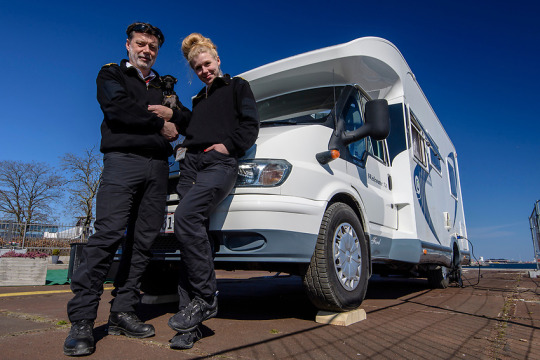

The pair first met when Line started working for Nordic Seaplanes as an aerodrome assistant back in 2016. She was still training to be a pilot at Greybird Pilot Academy in Aarhus, and she admits it was a little bit of luck that landed her the job. “I saw that [Danish music producer] Remee had posted a photo on Instagram showing a seaplane in the Maldives,” she explained. “I left a comment saying: ‘Did you know one of those is coming to Denmark soon?’ He never replied; but HR from Nordic Seaplanes did!” “What did they say?” I asked, already guessing the answer. “They wanted me in for an interview.” Line smiled. “They’d checked out my profile and remembered meeting me at Greybird once. One of their aircraft had landed at the airport for refuelling one afternoon and I was really excited to see it. I cried like a little bitch.”

If you’ve never heard of Nordic Seaplanes before then you’ve probably spotted their unmistakable aircraft in the skies above – particularly during the warmer months. The twin otter DHC—6-300, with its distinct red and white paint job, flies relatively low over the landscape during its 45-minute journey between Aarhus and Copenhagen. In both cities the plane departs and lands on water – Nordre Toldbod in Copenhagen, and Miljøhavnen in Aarhus – and makes for a far more interesting alternative to taking the train. In fact, the next fastest route between the two locations takes at least three hours by rail – a significant difference for those professionals who are charging by the hour.
I met one such professional, who wished to remain anonymous, during my first flight in 2018. “My colleagues wouldn’t like it if they knew I was receiving special treatment from the boss,” he tells me. “I’m a lawyer for a Copenhagen-based firm, but I live in Aarhus with my wife and kids,” he explains. “This commute means I get to spend more time with them, and the firm actually saves money this way.” “How so?” I ask. “Well, naturally I charge by the hour – even when I’m travelling for work.”

Looking around the 18-seater plane I notice that the majority of passengers are dressed smart-casual, with briefcases or leather laptop bags in their possession. And it’s then that I realise what a fantastic idea this whole concept is. And enjoyable, too. With the ground so close, buildings and landmarks are easy to identify and, in my case, photograph professionally. “Who needs a drone?” I think to myself.
The landing on water is smooth and actually very exciting – much like the takeoff. And within minutes everybody is safely off the plane and making their way to taxis or loved ones. The anonymous lawyer is greeted by his family and returns to shake my hand. “You really should fly with them early in the morning,” he suggests. “The sunrise is just stunning.”
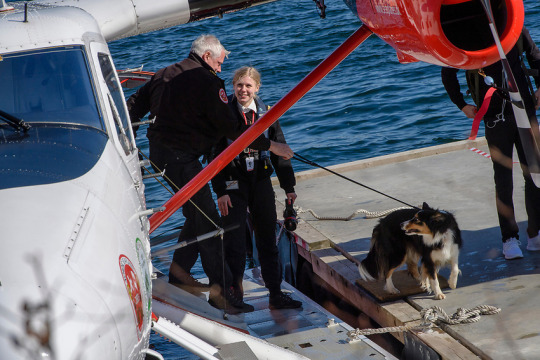
It was during the return flight to Copenhagen that I first met Line. At the time I had no idea she was the pilot; instead I thought she was potentially one of the ground staff whose duty it was to help load and unload passengers and their belongings. I put this observation down to the fact that she welcomed us all onboard and gave us a pre-flight briefing shortly before takeoff. I mean, how often does a pilot or captain do that?
So when we sat down to talk I was taken aback when she told me she had been flying the plane on the return journey. “A young, female pilot… how modern.” I smiled. “We need to talk more. Can I come and fly with you again soon and interview you?” “Sure,” replied Line. “And you can meet my partner, Ulrik. He’s a pilot, too.”

I’m a little stressed out before our second meeting. Somehow I’ve miscalculated the distance from my (new) office to their check-in desk at Langelinie. Half-way there, I receive a phone call from Julie asking me where I am: the flight leaves in ten minutes. “I’m on my way!” I pant down the phone. “I’ll be there in five!” “Well don’t worry about going to the desk to get your boarding pass – just go straight to the pontoon and we’ll meet you there.” Which is how I found myself boarding a flight which literally took less than five seconds to check in for. A first for me in my 37 years on this planet.
I’m the last to sit down and strap myself in before the doors close and we’re on our way. The smell of fuel briefly enters my nostrils before the extractor fans kick in, and all of a sudden we’re accelerating towards Refshaleøen, the small waves below washing over the feet of the plane. There’s a little bit of residue childhood adrenaline pumping through my veins, and then we’re airborne once again. Out of the window I spot the Royal Yacht sailing out to sea, and just moments later, Dyrehaven makes an appearance on the port side. Ancient woodland gives way to motorways and high-rise apartments, suburbs become fields, and suddenly I’m totally disorientated. I reach for my phone to launch Google Maps and marvel at the speed of the little blue dot as it traverses across my screen. In a few moments we’ll be passing over Sjællands Odde and overtaking the ferries that cross over to Jutland.
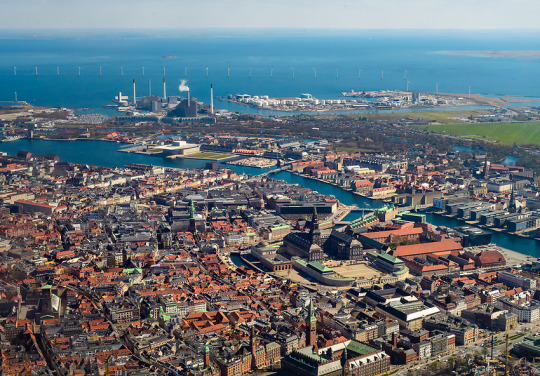

Upon our arrival in Aarhus I’m introduced to Ulrik, and the three of us walk less than 20 metres to a private area behind a metal fence. There I’m greeted by a little black Italian Greyhound as it tenderly licks my hand and wags its tail. “This is Elga-Olga,” Line tells me. “She lives with us here.” Line sweeps her hand in front of her as she says this and shows me their home on four wheels. “The three of you live right here?” I ask, rather surprised and in awe. Line nods and unlocks the door. We head inside.
I listen as the pair tell me of their lifestyle; of how they get to choose where to call home when they get time off together. I find myself shaking my head in disbelief, and feeling a little bit jealous of their nomad way of life. The image most people have of pilots, I say to them, is an extravagant one: champagne breakfasts in a large house with a pool. Or am I way out of touch with reality here? “In our case, yes,” replies Line. “Flight School wasn’t exactly cheap – I borrowed the money from my sister, and living here enables me to pay her back.”
I want to hear more, but unfortunately time is against us, and we don’t have long to go until Ulrik has to take us all back to Copenhagen. So we make an agreement to meet up the next time they are together in the capital with their camper.
As I stand in line to board the plane I spot a young man carrying a guitar case. It goes in the belly of the aircraft with all the other luggage, and the man and his travelling partner climb the steps of the plane and disappear inside. Coincidentally I find myself sitting just in front of him during takeoff and kindly ask him if it’s OK to pick his brains about why he chooses to fly with Nordic Seaplanes. “Sure, no problem,” he replies. His companion looks at me and smiles. The cool-looking guy with the aviator shades tells me that, as a touring musician, it’s important for him to be rested and relaxed before each show, and that the short flight between the mainland and Zealand really helps. “Are you in a band?” I ask. He smiles. “Yeah, you could say that.” “Don’t the other musicians mind that you get to travel in luxury whilst they have to make do with public transport?” “No,” he laughs. I pap a few arty portraits of him and thank him for his time. “Just one more thing,” I say. “Could I take your name, please?” “Yeah, it’s Mads Langer.”


As it turns out, famous Danish singer-songwriter Mads isn’t the only well-known person to use the services of Nordic Seaplanes. Members of the Royal Family, including Queen Margrethe II herself, have been known to fly from time to time, as well as former PM Lars Løkke Rasumussen. “We get a little bit start-struck sometimes,” Ulrik tells me, “but they all behave like everybody else, and that’s how we treat them, too. Everybody’s welcome.”
My third meeting with Line takes place straight after the brief search operation over Roskilde Fjord. With a bit more time on our hands, I take the opportunity to snap some portraits of the couple and to go a little deeper into their story. Naturally I approach the elephant in the room head on: “What about the 30-year age difference – how’s that working out on a professional level?” The pair both grin. “We both learn an awful lot from one another,” explains Ulrik, who started learning to fly around the time Line first entered the world. “I learnt the old-fashioned way, by saving money and paying for lessons whenever I could afford it.“ I ask him about his career and how he ended up in his current employment. “Well, I started out in my late-20s, flying mail and tourists in and out of the islands of Tåsinge and Ærø,” Ulrik explains. “Then, whilst working as a freelance taxi pilot at Billund Airport, an aircraft from Greenland arrived at for maintenance and I spent the next six months helping to fix it up. I took my seaplane rating during this time and became the only commercial seaplane-rated pilot in Denmark.
“One of the earliest jobs I got was a three-month assignment for TV2. They were filming a show called ‘The Little Yellow Seaplane’, and it was my job to fly to remote islands and areas of Denmark with a TV presenter.
“Then, in 1997, I went on holiday to the Maldives to visit my brother – a dive instructor. I instantly applied for a job with a seaplane company, but they said no and I returned home to Denmark.
“But six months later they called and asked: ‘Can you start tomorrow?’ I signed a two-year contract and stayed for 17.” “Why did you stop working there?” “It was the Boxing Day tsunami; there was no work after that.”
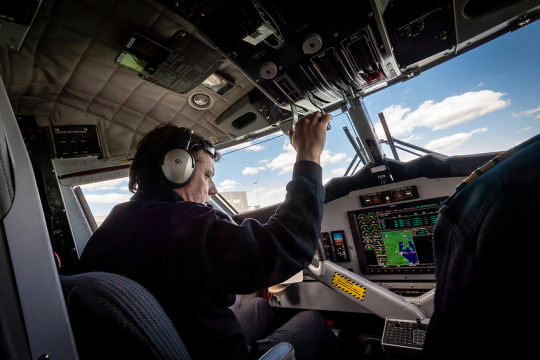
I ask Line what it’s like working with Nordc Seaplanes. “It’s fantastic; they’re a very forward-thinking company. Obviously there aren’t a great many female pilots out there, but on top of that they’re also 100% carbon neutral.” This is something I noticed upon my arrival at the check-in area this time around – a huge poster hanging from the fence to the Welcome Area. According to their website, Nordic Seaplanes have started a collaboration with Thor Heyerdahl Climate Parks and Bio8. The park covers an area of 2,146 hectares of newly planted mangrove forest in Myanmar, and their share of this project means that the CO2 emissions from their flights are 100% neutralised.
The inspiration came from another Danish aviation firm, DAT, whose domestic routes and flights over the North Sea to Aberdeen in Scotland are also carbon neutral.
At the same time, the company acknowledges that there isn’t any miracle cure that will, in a single stroke, make aviation the world’s most sustainable mode of transport, but the mangrove tree helps the world along the way. Fifty per cent of the trees’ biomass is CO2, and as such it absorbs four-to-five times as much carbon as other trees in general.

As I wrap up our interview, I’m beginning to realise just how many potential angles there are to this story. But the one thing I haven’t even asked yet – a subject that repeatedly gets written about when it comes to Danish culture – is how happy they are. I ask Line if she’d recommend her job and lifestyle to anyone else? “Oh, absolutely,” she replies in a heartbeat. “It’s so romantic!” “What’s so special about flying a seaplane?” “Well, I know that a lot of pilots go on to work for commercial airlines and get to fly big planes over long distances,” she explains. “With the seaplane there’s never an opportunity to stick it on autopilot and hand over the controls.” Ulrik nods in agreement as he takes a sip of his coffee. “Planes are getting smarter, but this one is still very primitive. Your constantly physically flying the aircraft, from takeoff to landing, as well as interacting with the passengers and refuelling the plane.” “It’s a proper flying job, Line interjects. Her eyes seem to shine as she says this. “There’s another bonus.” Ulrik smiles. “We know the guy who owns the fort over there,” he says, pointing out the window towards a small, horseshoe-shaped fortress known as Trekroner Fort. “Some evenings Line and I get to moor the plane over there and take a bottle of wine and a picnic with us.” “That does sound very romantic,” I tell them. “Oh, it is,” Line replies, “and that’s exactly why I wanted this job in the first place. It’s my calling in life.”
0 notes
Photo

Gefionspringvandet by Anders Bundgaard (1908) @ Nordre Toldbod, København (2013
3 notes
·
View notes
Photo

Gefion Fountain - Nordre Toldbod - Norse Goddess Gefion driving her four sons she turned to oxen... #copenhagen #copenhagensworld #govisitdenmark #denmark #danishlife #norsemythology #norse #norsegods #scandinavia #gefion #gefionfountain #travelph #bloggerlife #fountain #fountains #reflection_perfection #reflections #reflectiongram #travelblogger #nofilter #nofilterneeded #nofiltersneeded #agameoftones #instatraveling #TravelPhotography #travel #aroundtheworld — view on Instagram http://ift.tt/2p5Dqtl
0 notes
Photo

Copenhagen: Nordre Toldbod (Northern Custom House area). #denmark #copenhagen #nordretoldbod
0 notes
Photo

12-3-17 Nordre Toldbod
0 notes
Photo

Ocean Quay Cruise Terminal Copenhagen has three cruise terminals, Langelinie Quay, Nordre Toldbod, and Ocean Quay (Oceankaj). The cruise terminal Ocean Quay in Copenhagen's North Harbour, Nordhavn, was inaugurated in 2014 and is the quay where the majority of turnarounds are handled.
0 notes
Photo

Gefionspringvandet by Anders Bundgaard (1908) @ Nordre Toldbod, København (2013
#gefjon#fountain#anders bundgaard#statues#church#copenhagen#denmark#architecture#digital photography
0 notes

